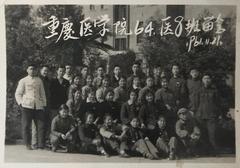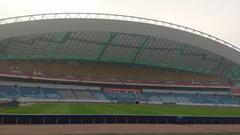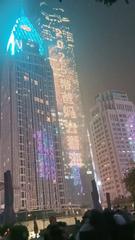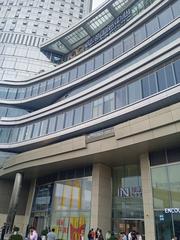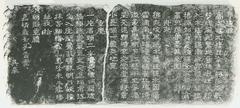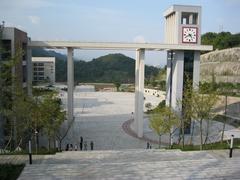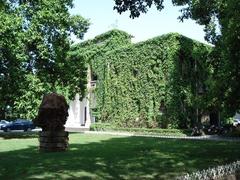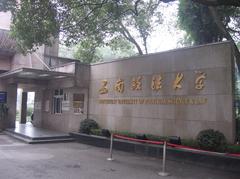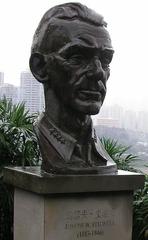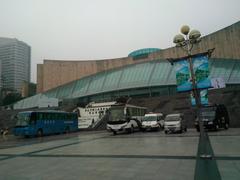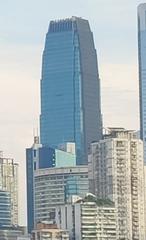Geleshan Revolutionary Martyrs’ Cemetery
Geleshan Revolutionary Martyrs Cemetery: Visiting Hours, Tickets, and Travel Guide for Chongqing
Date: 04/07/2025
Introduction
Nestled in the scenic hills of Chongqing’s Shapingba District, the Geleshan Revolutionary Martyrs’ Cemetery (歌乐山革命烈士陵园) stands as a solemn tribute to the thousands of Chinese revolutionaries who made the ultimate sacrifice during the Second Sino-Japanese War (1937–1945) and the Chinese Civil War. Established in 1955 on the slopes of Geleshan (Gele Mountain), the cemetery is not only a place of remembrance but also a vital cultural and educational site. Its proximity to significant historical locations, such as the former Kuomintang (KMT) secret police prisons of Zhazidong and Bai Gongguan, further deepens its historical resonance.
Geleshan was a strategic hub during China’s wartime capital era (1938–1946), hosting military operations and the Sino-American Cooperation Institute (SACI), which fostered intelligence sharing and joint efforts against Japanese forces. Today, the cemetery and its associated memorials provide free public access, accessible facilities, and guided tours, allowing visitors to engage with the poignant stories that shaped modern China. This guide delivers essential information on visiting hours, ticketing, travel logistics, and key historical features to ensure a meaningful experience at Geleshan Revolutionary Martyrs’ Cemetery. For official updates, refer to the Chongqing Martyrs Cemetery website and China Daily.
Contents
- Introduction
- History and Origins of Geleshan Revolutionary Martyrs’ Cemetery
- Geleshan’s Role During the Second Sino-Japanese War
- Visiting Information
- Opening Hours
- Admission and Tickets
- Guided Tours
- Facilities and Photo Opportunities
- Directions and Accessibility
- Key Historical Sites within the Cemetery
- Zhazidong Prison
- Martyrs Memorial Hall and Other Memorials
- Visitor Conduct and Guidelines
- Planning Your Visit
- FAQs
- Conclusion
- Sources
History and Origins
Established in 1955, the Geleshan Revolutionary Martyrs’ Cemetery was created to honor the memory of those who perished during China’s revolutionary struggles. The site, spanning approximately 20 hectares and containing over 3,000 graves, is among the largest revolutionary cemeteries in southwest China (China Daily). Its location was chosen for its proximity to the notorious KMT secret police prisons, Zhazidong and Bai Gongguan, where countless Communist Party members and patriots endured imprisonment, torture, and execution (Chongqing Martyrs Cemetery Official).
Geleshan’s Role During the Second Sino-Japanese War
Chongqing served as China’s wartime capital between 1938 and 1946. Geleshan’s mountainous terrain provided strategic cover for military and intelligence operations. The area became infamous for the KMT’s secret prisons, where hundreds of revolutionaries were detained and executed, particularly in the final days before the city’s liberation in 1949 (China.org.cn). The Sino-American Cooperation Institute (SACI), established in the area, was instrumental in coordinating intelligence and military training during the war (Deep China Travel).
Visiting Information
Opening Hours
- Daily: 8:00 AM – 5:00 PM (hours may extend to 5:30 PM in peak seasons)
- Note: Hours may vary during public holidays or maintenance periods.
Admission and Tickets
- General Admission: Free for all visitors.
- Special Exhibitions: Some exhibits inside the Martyrs Memorial Hall may require a nominal fee, payable on-site.
Guided Tours
- Availability: Guided tours can be arranged through the local tourism bureau or onsite. Most are conducted in Mandarin, with occasional English-language tours.
- Audio Guides: Available for rent at the entrance or via the official app.
Facilities and Photo Opportunities
- Rest areas, shaded seating, and bilingual information boards are available throughout the grounds.
- Numerous vantage points offer panoramic views of Chongqing and the surrounding hills—ideal for respectful photography.
- Outdoor photography is permitted, but restrictions apply inside the Martyrs Memorial Hall and certain exhibits.
Directions and Accessibility
- By Public Transit: Take Chongqing Rail Transit (CRT) Line 1 to Shapingba Station, then transfer to a local bus or taxi for a short ride to the cemetery entrance.
- By Bus: Lines 815 and 854 stop near the entrance.
- By Car: Limited parking is available at the site.
- Accessibility: The cemetery is equipped with paved pathways and ramps to accommodate visitors with mobility challenges, though some older or steeper sections may be less accessible.
Key Historical Sites within the Cemetery
Zhazidong (Cinder Cave) Prison
Zhazidong, originally a coal mine, was transformed by the KMT in 1938 into a covert prison for political detainees (Chinawiki.net). Surrounded by mountains on three sides, the site was notoriously secure and isolated. Prisoners faced harsh conditions, torture, and eventual execution. Today, visitors can explore preserved cells and exhibits recounting the prisoners’ resistance and resilience (chinadaily.com.cn).
Martyrs Memorial Hall and Other Memorials
The Martyrs Memorial Hall features original artifacts, including personal effects, documents, and instruments of torture (source). Artistic tributes such as the Martyr Statues, frescoes, and engraved dedications are found throughout the grounds, offering insight into the period’s history and commemorating the martyrs’ sacrifices.
Visitor Conduct and Guidelines
- Dress Modestly: Show respect for the site and its significance.
- Behavior: Maintain a quiet, reflective demeanor, especially near memorials and inside the Memorial Hall.
- Photography: Permitted outdoors; prohibited in indoor exhibits unless otherwise indicated.
- No Food/Drink/Smoking: These are not allowed within the memorial zones.
- Ceremonial Etiquette: Respect ongoing ceremonies, especially during Martyrs’ Day (September 30) and Qingming Festival (early April). Offering flowers at main memorials is customary.
Planning Your Visit
- Recommended Duration: Allocate 2–3 hours to fully explore the cemetery, memorial hall, and grounds.
- Best Time to Visit: Spring and autumn offer comfortable weather and beautiful scenery.
- What to Bring: Comfortable shoes, water, sun protection, and rain gear (in summer).
- Nearby Attractions: Consider visiting Ciqikou Ancient Town, the Three Gorges Museum, and the Dazu Rock Carvings for a broader understanding of Chongqing’s heritage.
Frequently Asked Questions (FAQ)
Q: What are the opening hours?
A: The cemetery is open daily from 8:00 AM to 5:00 PM (sometimes until 5:30 PM).
Q: Is there an admission fee?
A: General admission is free. Some exhibitions may charge a small fee.
Q: How do I get there?
A: Use CRT Line 1 to Shapingba Station, then take a bus or taxi to the entrance.
Q: Are guided tours available?
A: Yes, guided tours (mainly in Chinese) and occasional English tours are available.
Q: Is the site wheelchair accessible?
A: Most main paths are accessible, but some areas may be challenging.
Q: Can I take photos inside?
A: Photography is allowed outdoors, but prohibited inside the Martyrs Memorial Hall and select exhibits.
Conclusion
Geleshan Revolutionary Martyrs’ Cemetery stands as a profound testament to China’s revolutionary history and the sacrifices of its people. From the preserved prison cells of Zhazidong to the evocative Martyrs Memorial Hall, visitors can engage deeply with the stories that shaped modern China. With free admission, comprehensive facilities, and bilingual resources, Geleshan is accessible and meaningful for history enthusiasts and casual travelers alike. Enhance your visit by exploring nearby attractions and by respecting the solemnity of this landmark.
For the most up-to-date information and personalized travel tips, download the Audiala app and follow official tourism resources. Geleshan is a place to explore, remember, and honor.
Sources
- Chongqing Martyrs Cemetery Official
- China Daily
- China.org.cn
- Deep China Travel
- Chinawiki.net
- Xinhua News Agency
- Topography of Red Memories in Modern China
Explore. Remember. Honor.

